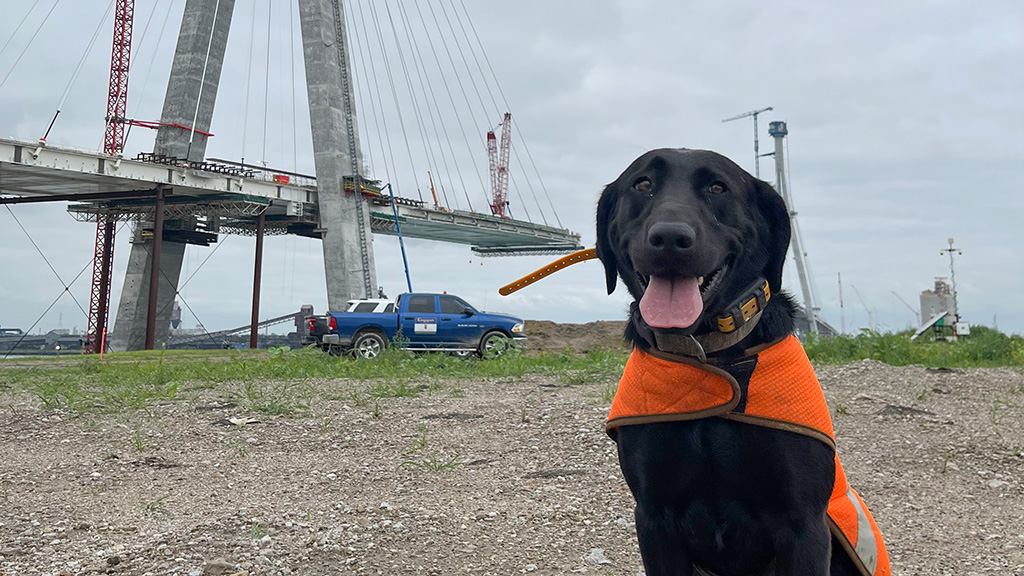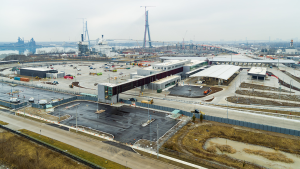Humans are usually responsible for safety on construction sites but on the Gordie Howe International Bridge project, workers are getting some help from a four-legged friend.
Demon, a two-year-old Labrador Retriever, is one of several dogs patrolling the site where the bridge is being built to deter birds and wildlife from nesting, protecting them from active construction. The name Demon came from the breeder but the dog is actually sweet say those who work with her.
“Early on in our construction program we recognized that nesting birds could potentially be an issue for us from a construction standpoint,” Justin Kelley, environmental director for the Bridging North America consortium, told the Daily Commercial News.
“Obviously we want to protect the birds, we want to protect our workers, and we didn’t want to have any unnecessary delays as a result of nesting, so early on we got in contact with Kingsport (Environmental Falconry Services) to provide services to us to help mitigate any sort of nesting birds that might be in the area.”
A video featuring Demon was released on Aug. 26 in honour of International Dog Day.
Nicole Soucie, owner of Kingsport Environmental Falconry Services, explained a day in the life of the work dog.
“We do have early mornings here because of nesting activity, so we start at about 4:30 in the morning. We get up, we go out, we feed our dog breakfast,” Soucie said.
“Then our dog gets its work vest on, gets loaded in the van alongside its co-workers, the birds. We drive to site. When they’re onsite, based on location, the dog will either be taken out and run to deter geese, ducks and killdear, anything that will nest on the ground…When their shift is done they go back home, their work vest comes off. They get to relax, they get their lunch and they wait for their next shift onsite.”
Soucie said her team uses a combination of birds and dogs.
“The dog running the ground claims the territory where these birds no longer want to check the area out and lay eggs on the ground because there is a predator nearby,” Soucie said. “Essentially, we run our dogs around and they flush out the birds and we help them move on to a better nesting area…We’re naturally moving them along to a safer spot.”
Birds of prey are also used to prevent birds from nesting in some of the higher areas on the site. The birds and dogs cover the 130 acres of the Canadian Port of Entry as well as the bridge land which is another 20 acres or so.
“Depending on where we are in terms of construction phasing we’ll focus on different areas,” Kelley noted. “The top of the tower for instance right now would not be an area we would need to do any mitigation because birds don’t go up that high. The canopy, there is lots of different nesting spots in those canopies so those are some of the areas that we focus on.”
Having worked on the site since they were seven or eight months old, the dogs are used to the workers and machinery.
There are about five dogs that guard the site during the day and at night.
“Just like us no one wants to work seven days a week, so we have dogs who trade in and out and get days off and spa days,” said Kelley.
The bridge, which will cross Windsor, Ont. and Detroit, Mich., will be the longest cable-stayed bridge in North America.
The bridge is currently about 60 per cent complete and is expected to open in 2025.
The video can be found here.
Follow the author on Twitter @DCN_Angela




Recent Comments